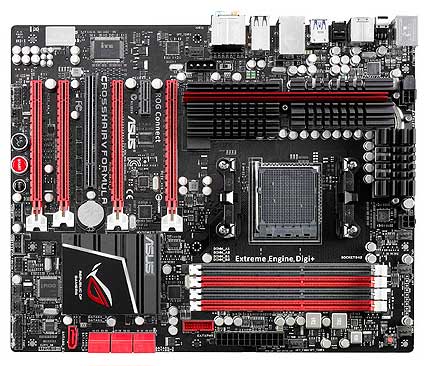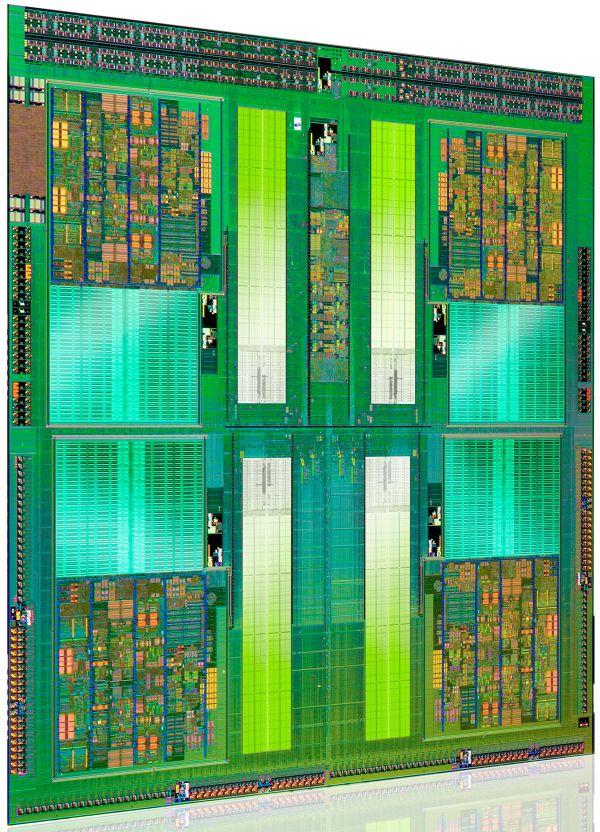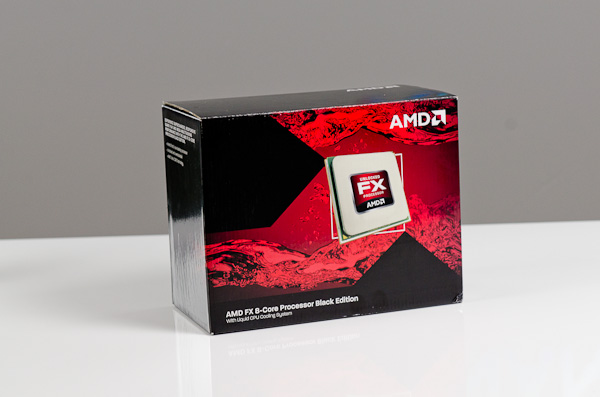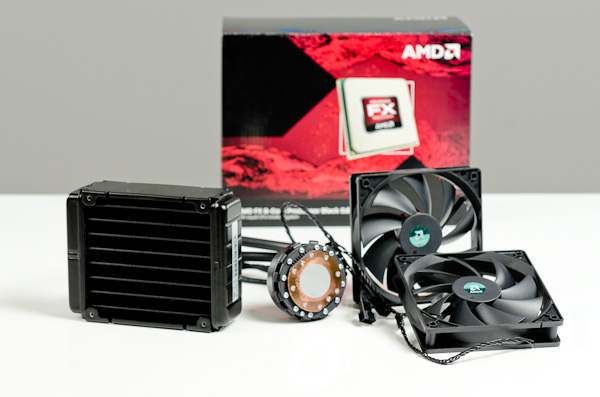The Bulldozer Review: AMD FX-8150 Tested
by Anand Lal Shimpi on October 12, 2011 1:27 AM ESTAMD has been trailing Intel in the x86 performance space for years now. Ever since the introduction of the first Core 2 processors in 2006, AMD hasn't been able to recover and return to the heyday of the Athlon 64 and Athlon 64 X2. Instead the company has remained relevant by driving costs down and competing largely in the sub-$200 microprocessor space. AMD's ability to hold on was largely due to its more-cores-for-less strategy. Thanks to aggressive pricing on its triple and hexa-core parts, for users who needed tons of cores, AMD has been delivering a lot of value over the past couple of years.
Recently however Intel has been able to drive its per-core performance up with Sandy Bridge, where it's becoming increasingly difficult to recommend AMD alternatives with higher core counts. The heavily threaded desktop niche is tough to sell to, particularly when you force users to take a significant hit on single threaded performance in order to achieve value there. For a while now AMD has needed a brand new architecture, something that could lead to dominance in heavily threaded workloads while addressing its deficiencies in lightly threaded consumer workloads. After much waiting, we get that new architecture today. Bulldozer is here.
It's branded the AMD FX processor and it's only available in a single die configuration. Measuring 315mm2 and weighing in at around 2 billion transistors (that's nearly GPU-sized fellas), Bulldozer isn't that much smaller than existing 45nm 6-core Phenom II designs despite being built on Global Foundries' 32nm SOI process. Both die area and transistor count are up significantly over Sandy Bridge, which on Intel's 32nm HKMG process is only 995M transistors with a die size of 216mm2. This is one big chip.
| CPU Specification Comparison | ||||||||
| CPU | Manufacturing Process | Cores | Transistor Count | Die Size | ||||
| AMD Bulldozer 8C | 32nm | 8 | 1.2B* | 315mm2 | ||||
| AMD Thuban 6C | 45nm | 6 | 904M | 346mm2 | ||||
| AMD Deneb 4C | 45nm | 4 | 758M | 258mm2 | ||||
| Intel Gulftown 6C | 32nm | 6 | 1.17B | 240mm2 | ||||
| Intel Nehalem/Bloomfield 4C | 45nm | 4 | 731M | 263mm2 | ||||
| Intel Sandy Bridge 4C | 32nm | 4 | 995M | 216mm2 | ||||
| Intel Lynnfield 4C | 45nm | 4 | 774M | 296mm2 | ||||
| Intel Clarkdale 2C | 32nm | 2 | 384M | 81mm2 | ||||
| Intel Sandy Bridge 2C (GT1) | 32nm | 2 | 504M | 131mm2 | ||||
| Intel Sandy Bridge 2C (GT2) | 32nm | 2 | 624M | 149mm2 | ||||
Update: AMD originally told us Bulldozer was a 2B transistor chip. It has since told us that the 8C Bulldozer is actually 1.2B transistors. The die size is still accurate at 315mm2.
Architecturally Bulldozer is a significant departure from anything we've ever seen before. We'll go into greater detail later on in this piece, but the building block in AMD's latest architecture is the Bulldozer module. Each module features two integer cores and a shared floating point core. FP hardware is larger and used less frequently in desktop (and server workloads), so AMD decided to share it between every two cores rather than offer a 1:1 ratio between int/fp cores on Bulldozer. AMD advertises Bulldozer based FX parts based on the number of integer cores. Thus a two module Bulldozer CPU, has four integer cores (and 2 FP cores) and is thus sold as a quad-core CPU. A four module Bulldozer part with eight integer cores is called an eight-core CPU. There are obvious implications from a performance standpoint, but we'll get to those shortly.
The FX Lineup
There are a total of 7 AMD FX CPUs that AMD is announcing today, although only four are slated for near-term availability.
| CPU Specification Comparison | |||||||||
| Processor | Cores | Clock Speed | Max Turbo | NB Clock | L2 Cache | TDP | Price | ||
| AMD FX-8150 | 8 | 3.6GHz | 4.2GHz | 2.2GHz | 8MB | 125W | $245 | ||
| AMD FX-8120 | 8 | 3.1GHz | 4.0GHz | 2.2GHz | 8MB | 95W/125W | $205 | ||
| AMD FX-8100* | 8 | 2.8GHz | 3.7GHz | 2GHz | 8MB | 95W | N/A | ||
| AMD FX-6100 | 6 | 3.3GHz | 3.9GHz | 2GHz | 6MB | 95W | $165 | ||
| AMD FX-4170* | 4 | 4.2GHz | 4.3GHz | 2.2GHz | 4MB | 125W | N/A | ||
| AMD FX-B4150* | 4 | 3.8GHz | 4GHz | 2.2GHz | 4MB | 95W | N/A | ||
| AMD FX-4100 | 4 | 3.6GHz | 3.8GHz | 2GHz | 4MB | 95W | $115 | ||
| AMD Phenom II X6 1100T | 6 | 3.2GHz | 3.6GHz | 2GHz | 3MB | 125W | $190 | ||
| AMD Phenom II X4 980 | 4 | 3.7GHz | N/A | 2GHz | 2MB | 125W | $170 | ||
The FX-8150, 8120, 6100 and 4100 are what's launching today. The first digit in AMD's FX model numbers indicates the number of cores with the 8150 and 8120 boasting eight, while the 6100 only has six active integer cores (three Bulldozer modules). The FX-4100 features four integer cores. L2 cache scales with core count (2MB per module), while the L3 cache size remains fixed at 8MB regardless of SKU.
North Bridge and L3 cache frequency alternate between 2.0GHz and 2.2GHz depending on the part. TDPs range between 95W and 125W as well, with the FX-8120 being offered in both 125W and 95W versions.
There's only a single Bulldozer die. The 6 and 4 core versions simply feature cores disabled on the die. AMD insists this time around, core unlocking won't be possible on these harvested parts.
The huge gap in clock speed between the 8120 and 8150 are troubling. Typically we see linear frequency graduations but the fact that there's a 16% difference between these two SKUs seems to point to process problems limiting yield at higher frequencies—at least for the 8-core version.
Outside of the quad-core and hex-core Bulldozer pats, the only other FX processor able to exceed the 3.3GHz clock speed of the Phenom II X6 1100T is the 8150. And if you include quad-core Phenom II parts in the mix, only two Bulldozer parts ship at a higher stock frequency than the Phenom II X4 980. Granted Turbo Core will help push frequencies even higher, but these low base frequencies are troubling. For an architecture that was designed to scale to clock speeds 30% higher than its predecessor, Bulldozer doesn't seem to be coming anywhere close.
The entire FX lineup ships unlocked, which allows for some easy overclocking as you'll see soon enough.
Motherboard Compatibility
AMD is certifying its FX processors for use on Socket-AM3+ motherboards. Owners of standard AM3 motherboards may be out of luck, although motherboard manufacturers can choose to certify their boards for use with Bulldozer if they wish to do so. From AMD's perspective however, only AM3+ motherboards with BIOS/UEFI support for Bulldozer are officially supported.
All existing AM2/AM2+/AM3/AM3+ heatsinks should work with the FX processor; they simply need to be rated for the TDP of the processor you're looking to cool.

For this review, AMD supplied us with ASUS' Crosshair V Formula AM3+ motherboard based on AMD's 990FX chipset.
AMD does offer six 6Gbps SATA ports on its 990FX chipset, a significant upgrade from the two 6Gbps ports on Intel's 6-series chipsets. Unbuffered ECC memory is also supported for those who desire the added security, once again a feature not supported on Intel's consumer grade 6-series chipsets.
Despite AMD's trend towards releasing APUs with integrated GPUs (thus requiring a new socket), AMD insists that the AM3+ platform will live to see one more processor generation before it's retired.
AMD's Liquid CPU Cooling System
Alongside its new FX processors AMD is introducing its first branded liquid cooling system manufactured by Asetek.
AMD's cooling system is similar to other offerings from companies like Antec and Corsair. The system is self contained, you never have to worry about adding any more liquid to it.
Attach the cooling module to your CPU socket via a simple bracket, and affix the radiator to your case and you're good to go. The radiator is cooled via two 120mm fans, also included in the box.
AMD doesn't have an exact idea on pricing or availability of its liquid cooling solution, but I'm told to expect it to be around $100 once available. My sample actually arrived less than 12 hours ago, so expect a follow up with performance analysis later this week.
The Roadmap
For the first time in far too long, AMD is actually being very forthcoming about its future plans. At a recent tech day about Bulldozer, AMD laid out its CPU core roadmap through 2014. The code names are below:
Piledriver you already know about, it's at the heart of Trinity, which is the 2—4 core APU due out in early 2012. Piledriver will increase CPU core performance by around 10—15% over Bulldozer, although it will initially appear in a lower performance segment. Remember that final generation of AM3+ CPU I mentioned earlier? I fully expect that to be a GPU-less Piledriver CPU due out sometime in 2012.
Steamroller will follow in 2013, again improving performance (at the core level) by around 10—15%. Excavator will do the same in 2014. AMD believes that these performance increases will be sufficient to keep up with Intel over time, however I'll let you be the judge of that once we get to the Bulldozer performance numbers.
The other thing to note about AMD's roadmap is it effectively puts the x86 business on an annual cadence, in line with what we've seen from the AMD GPU folks. Although AMD isn't talking about what process nodes to expect all of these cores at, it looks like AMD will finally have an answer to Intel's tick-tock release schedule moving forward.























430 Comments
View All Comments
Pipperox - Saturday, October 15, 2011 - link
With a 40-50% gain Bulldozer would be even ahead of Ivy Bridge.. and what comes next.Or are we still talking about SuperPI?
Or games run at 640x480 lowest quality settings?
The fact is, almost all single threaded applications are old and they run already super fast on ANY cpu and the difference can be seen only in benchmarks.
All recent performance demanding applications are properly multithreaded, and Bulldozer there is competitive with i5 2500 and occasionally with i7 2600 (and with a 10% boost Bulldozer would be competitive with i7 2600).
And this will become more and more the standard one year from now.
Sure Bulldozer has not met the enthusiasts' expectations, it doesn't perform as people would expect an "octacore" (but it's not, it's just a quad with a different form of hyperthreading and "clever" marketing) and it doesn't deserve the FX moniker.
But still it's the most competitive CPU AMD has launched in years, perhaps with the exception of Zacate.
nirmv - Saturday, October 15, 2011 - link
Not all applications are heaviliy multi-threaded, there is still need to improve single thread performance.And even for those few loads that are competitive in performance, they do it with twice the power draw.
See here from xbitlabs review :
http://www.xbitlabs.com/images/cpu/amd-fx-8150/pow...
Pipperox - Sunday, October 16, 2011 - link
But increasing single threaded performance has a cost, on die space and circuit complexity.Bulldozer has a huge die just because it has enormous caches (8MB L2 vs 1Mb on SandyBridge) which probably will turn useful on server workloads (but that's just a guess).
By looking at the die shot, you'd get a 40% die area reduction with "normal" caches.
So AMD engineers decided to drop single threaded performance improvements in favor of higher multithreaded scalability and higher clock speed scalability.
We'll see if in the long run this will pay off.
I agree power consumption doesn't look good in comparison with Intel, but it does look good in comparison to Thuban.
This is the first released silicon of Bulldozer.. i expect power consumption to improve with newer steppings and silicon process tuning.
That being said, Intel has the best silicon process in the whole industry.
AMD can't compete with that.
But i'd guess that at lower clock speeds (like in server), AMD's power consumption will improve a lot.
Looks like with the FX AMD tried to push their current silicon to the maximum which they could (within the 125W TDP which is sort of an industry standard).
LiveandEnjoyLife - Friday, October 14, 2011 - link
Some people are missing the point. At this stage in the game, processor speed is a moot point beyond benchmarks. AMD and Intel make very fast CPUs in relation to what gamers and every day users use them for. Intel CPUs are blazing fast and AMD CPUs are fast. The average Joe does need more than a dual-core CPU. If you were going to actually do something that would require heavy multi-threading, then it comes down to the efficiency the app to make use of the cores and the ability to use hyperthreading. If you wanted the most performance for a mult-threaded application, you would pick more physical cores over virtual cores. So for most of use it comes down to bang for buck.8 cores is better than 2, 4, or 6 for true multi-threaded capable applications.
For speed tests Intel wins hands down.
If you were sitting next to someone playing a game and all things were the same except CPU, you would not be able to tell which machine is running what CPU. However you would notice if one costs significantly more than the other.
That is my 4 cents.
7Enigma - Friday, October 14, 2011 - link
Hi Anand,Great review but there is a text error when referring to pass one vs. pass two of the benchmark mentioned in the Subject line. You said:
"The standings don't change too much in the second pass, the frame rates are simply higher across the board. The FX-8150 is an x86 transcoding beast though, roughly equalling Intel's Core i7 2600K. Although not depicted here, the performance using the AMD XOP codepath was virtually identical to the AVX results."
But the graph clearly shows a complete flip-flop from first pass to second pass. When I look closely it appears you ordered the text and graphs differently and were referring to if you had the non-AVX and AVX-enabled graphs next to each other instead of in separate sections. Basically the text and graphs don't match up.
HTH
Iketh - Friday, October 14, 2011 - link
You're an utter retard. The reason they're sold out is newegg advertised these nicely all over their site, including the front page, with "World's first 8-core desktop processor."There are plenty of reasons to purchase these processors aside from their performance and that's ok. But the majority bought them thinking they're gonna "rock", and those are the ones "showing intelligence." Same goes to you for thinking the majority is well-informed/intelligent.
What's even worse, the 8-core version for sale is the 3.1ghz, not the 3.6 tested in this review. I'm seriously LOL'ing...
How many did Newegg have in stock anyhow? Wouldn't that figure matter regarding your ignorant comment?
rcrossw - Friday, October 14, 2011 - link
I have used AMD products for years. I use Intel at work. So to me there is no real difference between the two for what Business and the Average Computer user want or expect.Does it run, does it do the work I require of it, and do my programs and Network Access
work well and are reliable?
Intel indeed has incredible Processors, fast and reliable, and in the high end - expensive.
AMD is Low and Mid range - with processors that the average person can afford. Who is the most innovative - both. Today Intel has been , now I think the user needs to give this New X86-64 Architecture a chance.
I have a Asus M5A99x EVO with an FX6100 installed. The only problem I have had is having to upgrade the BIOS to accept the new Processor. So far I have had the Processor to 4.2 Ghz. Though AIDA 64 caused a BOD on one test. At 3.8 Ghz runs like a champ. Stil
working back to as close as I can get to 4.2 on Air.
After three years I have retired my old Phenon II Tri Core 720 for this, and it works for me.
I am not an extreme gamer, etc. But test it your self, before being too overly critical.
Does it work for me.
As an aside, next a SSD for faster response.
For those interested:
Asus M5A99x MB BIOS 0810 ( Newest)
AMD FX 6100 at 3.8 ghz
Corsair Vengeance 1600 - 16 gigs
HIS Radeon HD 6850
Windows 7 Ulimate 64
HPLP2475W Monitor at 1920x1200 DP
WD 500 SATA
WD 1001 SATA
LG H20L BD-R
Plextor DVDR
Enermax 620 Liberty PS - I know old but works.
Thanks
davbran - Saturday, October 15, 2011 - link
I have been having a hard time writing a comment on this topic without drawing fire from trolls.This review is hogwash without more information.
If the hardware is the same on all test machines, apart from the CPUs, then there is no wonder the performance was so bad. 6 Cores are going to utilize, and I am just pulling a number out of my ... hat, 4gb of RAM more efficiently than an 8 core using simple kitchen math. No need to break out the slide rules. It's a known fact, to most, that the big bottleneck in the multicore/multiprocessor world is memory. Mind you that's if we are factoring in that all the code that was used for testing purposes was written with multi-threading in mind.
You just can't compare apples to bananas in this manner.
silverblue - Saturday, October 15, 2011 - link
Each to their own. I thought it was a pretty good review, and Anand certainly held back from slating AMD to hell.Iketh - Sunday, October 16, 2011 - link
LOLLLLL